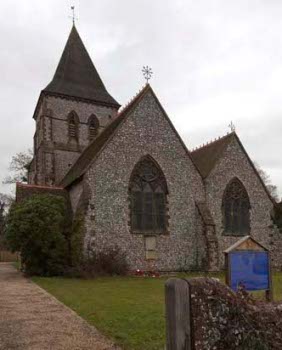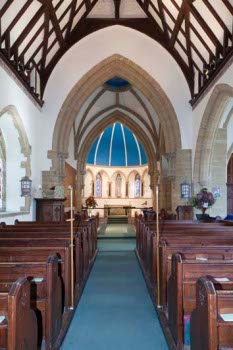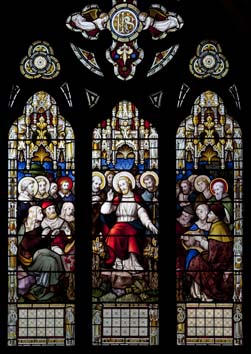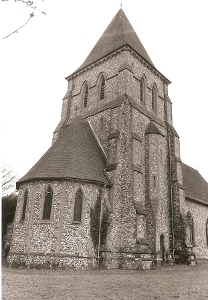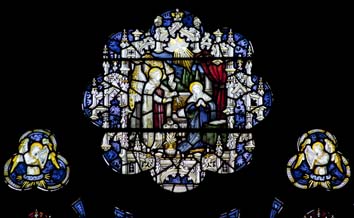Offham – St Peter
The parish of Hamsey extends from the Ouse to the Downs at the point where they reach the river-meadows. Offham, the largest settlement, had large chalk pits and there was further industry at Cooksbridge to the north (2 p171). Furthermore, Offham is above the floodline, but despite this, until the mid-C19 the church remained at Hamsey, damp and remote.
In 1858 a new church was started, which was consecrated two years later. It is well placed on a wooded slope at Offham and was mainly paid for by the Shiffners of Coombe House (Lower II p69), who had lived in the parish since 1787 (2 p172) and were closely involved in it. Most C19 rectors were members of the family and one, Sir George Schiffner, held the position from 1863 to 1906 (1). The intention was to abandon Hamsey church except the tower, but happily it survived. By 1875, £3959 (PP 125 as Hamsey) had been spent on the new church by E Christian (B 18 p500). Christian was noted for the size of his practice so on occasion his own participation was limited, but this was a relatively early work in which he is likely to have been closely involved and his design respects both local traditions and the site. The apse, in fact seven-sided, seems from a distance to echo the curves of the Downs. The material is light pebble-flint, and in addition to the apse, other features derive from the Ouse valley, including the axial-tower plan and the pyramid spire, though the early C14 style is later than most churches there. Colin Brent (1) also points to Christian’s stated admiration for the Norman romanesque as a likely influence, though here again his choice of C14 detail may appear anachronistic. The apse has traceried lancets and there is good Decorated tracery in the nave and south aisle.
Despite the relatively low cost, many touches, like the vaulted tower-space and marble shafts on the rere-arches of the apse, would be consistent with a higher one. The single aisle is large in proportion to the rest, but the lack of symmetry when seen from the west does not disturb.
Fittings
Font: Large and circular.
Glass:
1. (Apse, five lancets) Lavers and Barraud, 1860 (ibid).
2. (South aisle, second window) J Hardman and Co, 1862 (www.stainedglassrecords.org retrieved on 18/3/2013).
3. (South aisle, third window) J B Capronnier (‘a Belgian artist’), 1862 (B 20 p683).
4. (West window) Capronnier, 1876. A third window by Capronnier was destroyed by a storm in 1982.
5. (North nave, second window) Kempe and Co, 1910.
Sources
1. C Brent: St Peter, Offham, NFSHCT 2006 p7
2. P Combes: Contrasting Communities: Anglican Ecclesiastical Development in Barcombe and Hamsey in the Nineteenth Century, SAC 147 (2009) pp169-92
My thanks to Nick Wiseman for the colour photographs.
